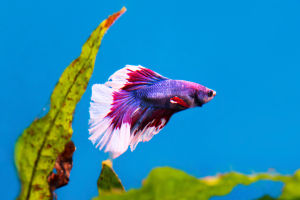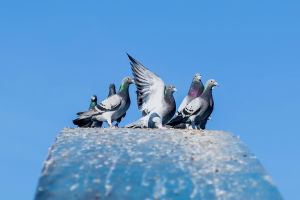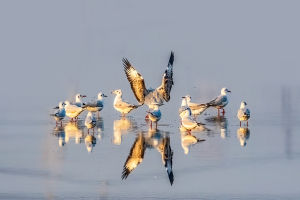Polar bears, the majestic kings of the Arctic, have captivated human imagination for centuries.
However, many misconceptions surround their lives in the wild.
In this article, we’ll separate fact from fiction and provide you with the latest insights into the world of these incredible creatures!
Myth 1: Polar Bears Are Always on the Hunt
A common misconception is that polar bears are constantly hunting. While they certainly spend a significant portion of their time hunting for seals, particularly in the spring and fall, they don’t hunt all year round. Polar bears are skilled at fasting for extended periods, especially during summer when the sea ice melts and seals are less accessible.
In fact, adult male polar bears can go for months without food, relying on their fat reserves. The hunger myths often overstate how much and how frequently they need to eat.
Fact 1: Polar Bears Are Adapted to Long Fasting Periods
Polar bears have evolved to survive on fat reserves built up during the hunting season. For example, a female polar bear can fast for several months while giving birth and nursing cubs in the den. During this time, polar may not hunt at all, relying on her stored fat to provide both energy and the necessary nutrients for milk production. This ability to survive without food for long periods is vital in a climate where access to food is often unpredictable, especially as climate change causes sea ice to melt earlier each year.
Myth 2: Polar Bears Are Always Aggressive
Another pervasive myth is that polar bears are inherently aggressive, often leading to fear-based perceptions. While polar bears are apex predators and can be dangerous, their behavior is generally driven by hunger and instinct rather than aggression. Polar bears are more likely to avoid human settlements than seek conflict.
However, with the shrinking of their natural habitat due to climate change, they are increasingly coming into contact with human populations. These encounters are often linked to their desperate search for food, rather than innate aggression.
Fact 2: Polar Bears Are Mostly Solitary and Shy
Despite their large size and predatory nature, polar bears are largely solitary animals that prefer to avoid humans when possible. They are not territorial in the same way other large predators are; instead, they roam vast expanses of ice, following their food sources. Most of their interactions with humans are a result of food scarcity or the encroachment of human development into their territory. Attacks on humans are extremely rare, and polar bears would typically prefer to flee rather than fight if they have the opportunity.
Myth 3: Polar Bears Are Completely Dependent on Ice
It’s often thought that polar bears rely solely on sea ice for all aspects of their lives. While sea ice is critical for hunting, as it provides a platform for catching seals, polar bears have been observed adapting to a changing environment. As sea ice becomes increasingly sparse, polar bears are spending more time on land, where they have been known to scavenge human refuse or forage for other food sources. This shift is more common as the ice melts earlier each year, leaving polar bears stranded or forced to travel further.
Fact 3: Polar Bears Are Adaptable, but Their Survival Is At Risk
While polar bears are indeed highly adaptable, their survival is increasingly threatened by the rapid loss of sea ice due to climate change. Rising temperatures are causing the ice to break up earlier in the spring and form later in the fall, shortening the period in which polar bears can hunt seals. This leads to reduced fat reserves, making it harder for them to survive during fasting periods. Some scientists warn that if current climate trends continue, polar bears could face extinction in the wild by the end of this century.
Myth 4: Polar Bears Are the Largest Bear Species
Many believe that polar bears are the largest species of bear, but in fact, while they are indeed massive, they do not hold the title. Grizzly bears, specifically the Kodiak bear, can be even larger than polar bears in some cases. Polar bears typically weigh between 900 and 1,600 pounds, with males being significantly larger than females. However, the size difference between polar bears and other species, such as the Kodiak bear or even some Alaskan brown bears, is not as large as the common myth suggests.
Fact 4: Polar Bears Are a Vital Indicator of Climate Health
Beyond their majestic appearance, polar bears play an important role in understanding the health of the Arctic ecosystem. Because they are at the top of the food chain, changes in their behavior, health, and population dynamics can signal shifts in the broader environment. For example, research showing declining polar bear populations and poor health due to the lack of food directly correlates to the melting ice. Polar bears are a keystone species, and their decline is a clear indicator of the urgent need to address climate change.
Polar bears are magnificent creatures whose survival is intricately tied to the delicate balance of the Arctic ecosystem. While many myths persist about their behavior and lifestyle, the reality is both more fascinating and urgent. As climate change continues to alter their habitat, understanding the true lives of these animals is crucial.
The facts show that while polar bears are resilient, their future hangs in the balance, urging us to take immediate action to protect them and the fragile ecosystems they inhabit!
Polar Bear
Video: Nat Geo Animals


